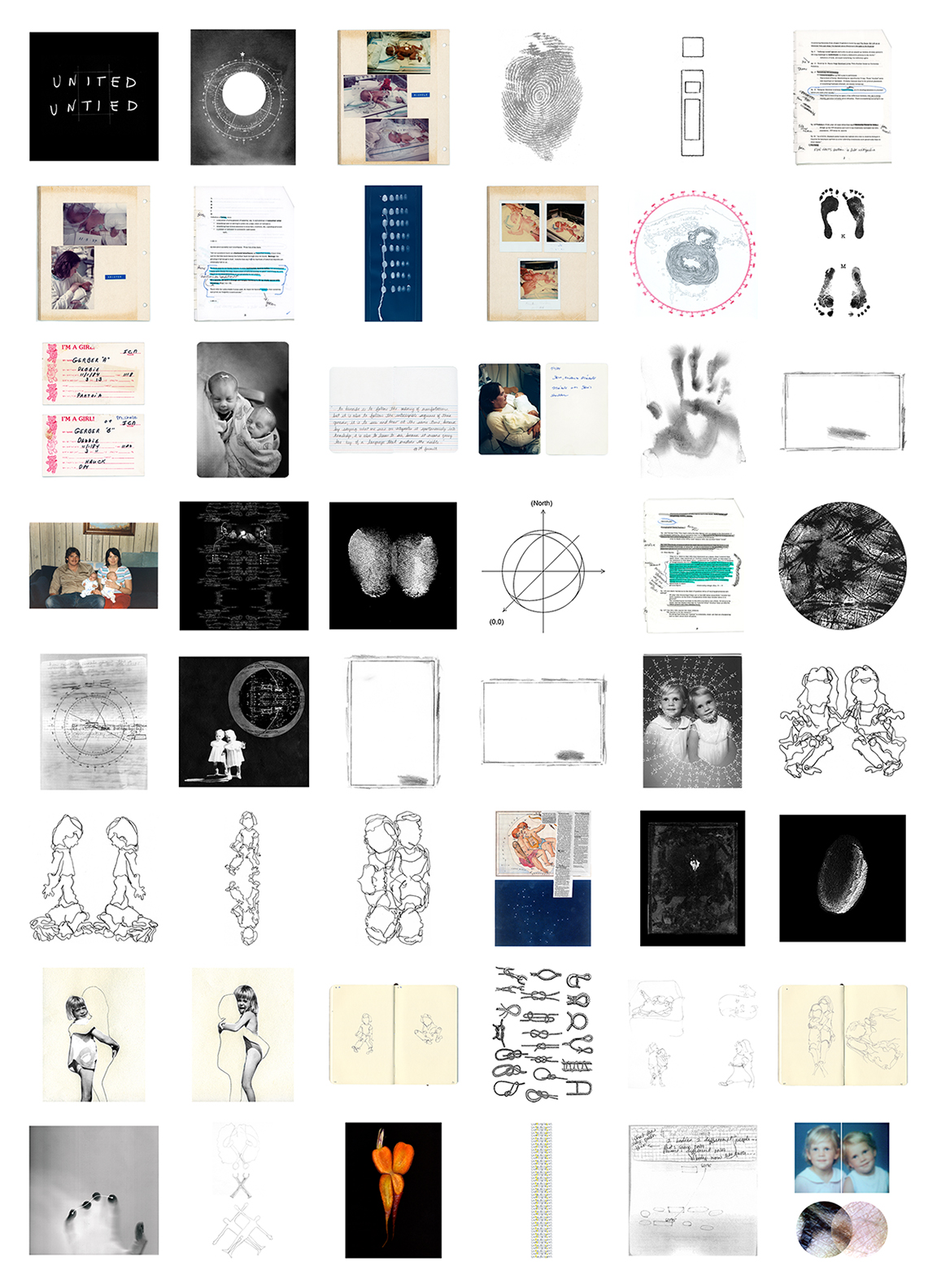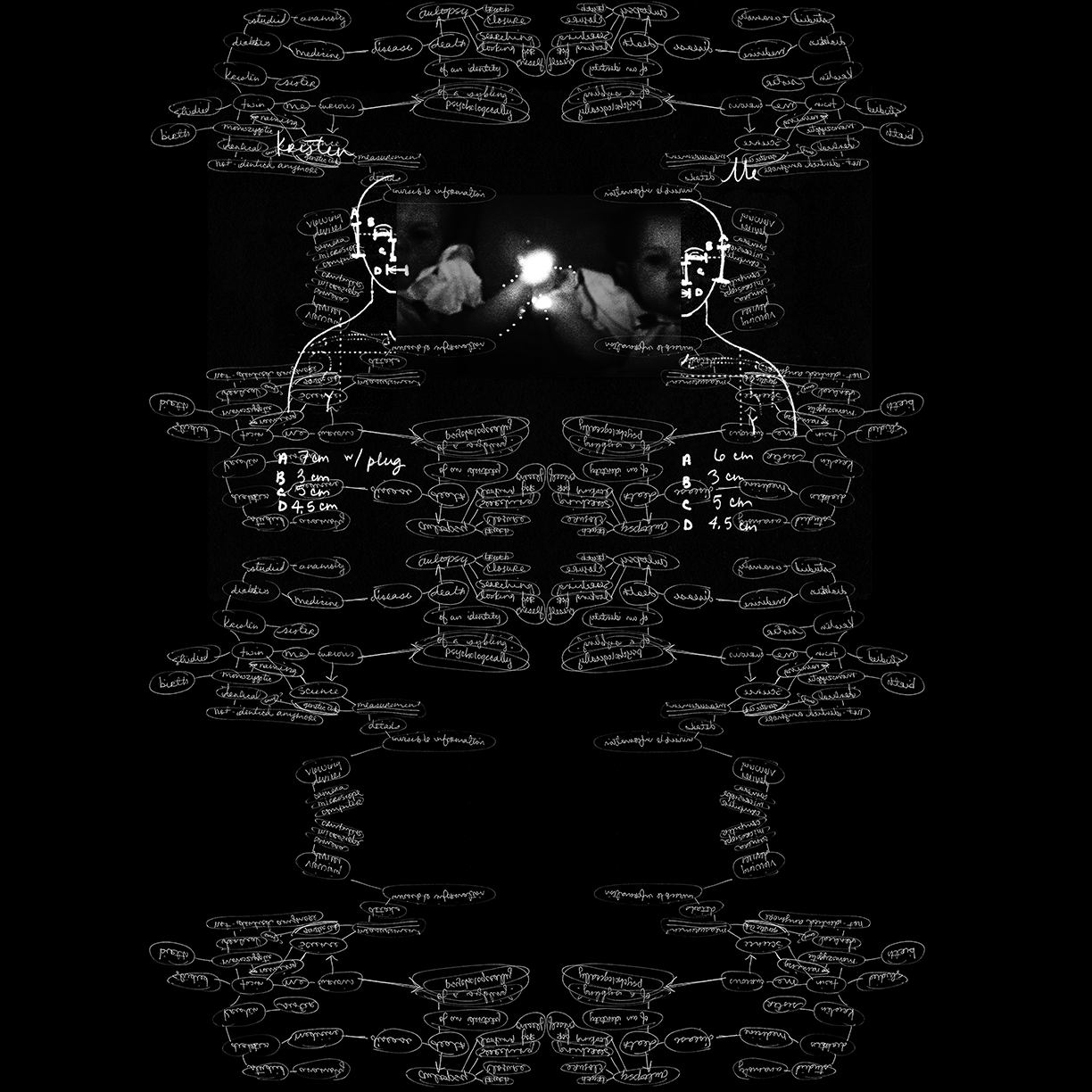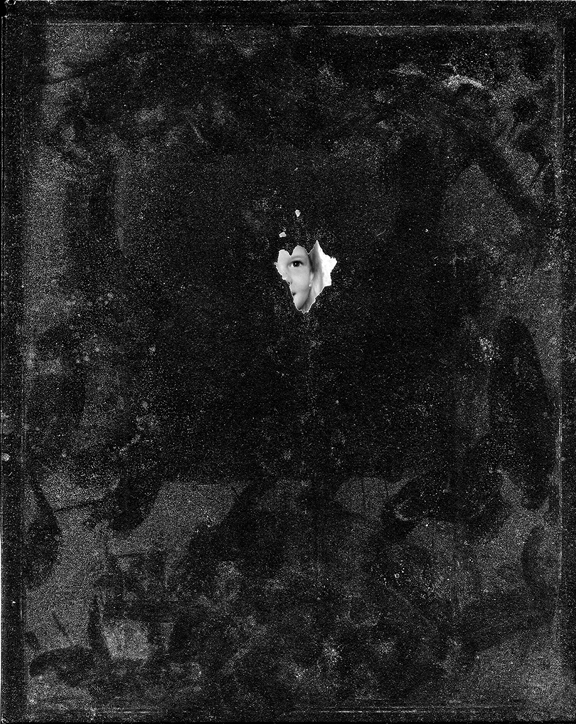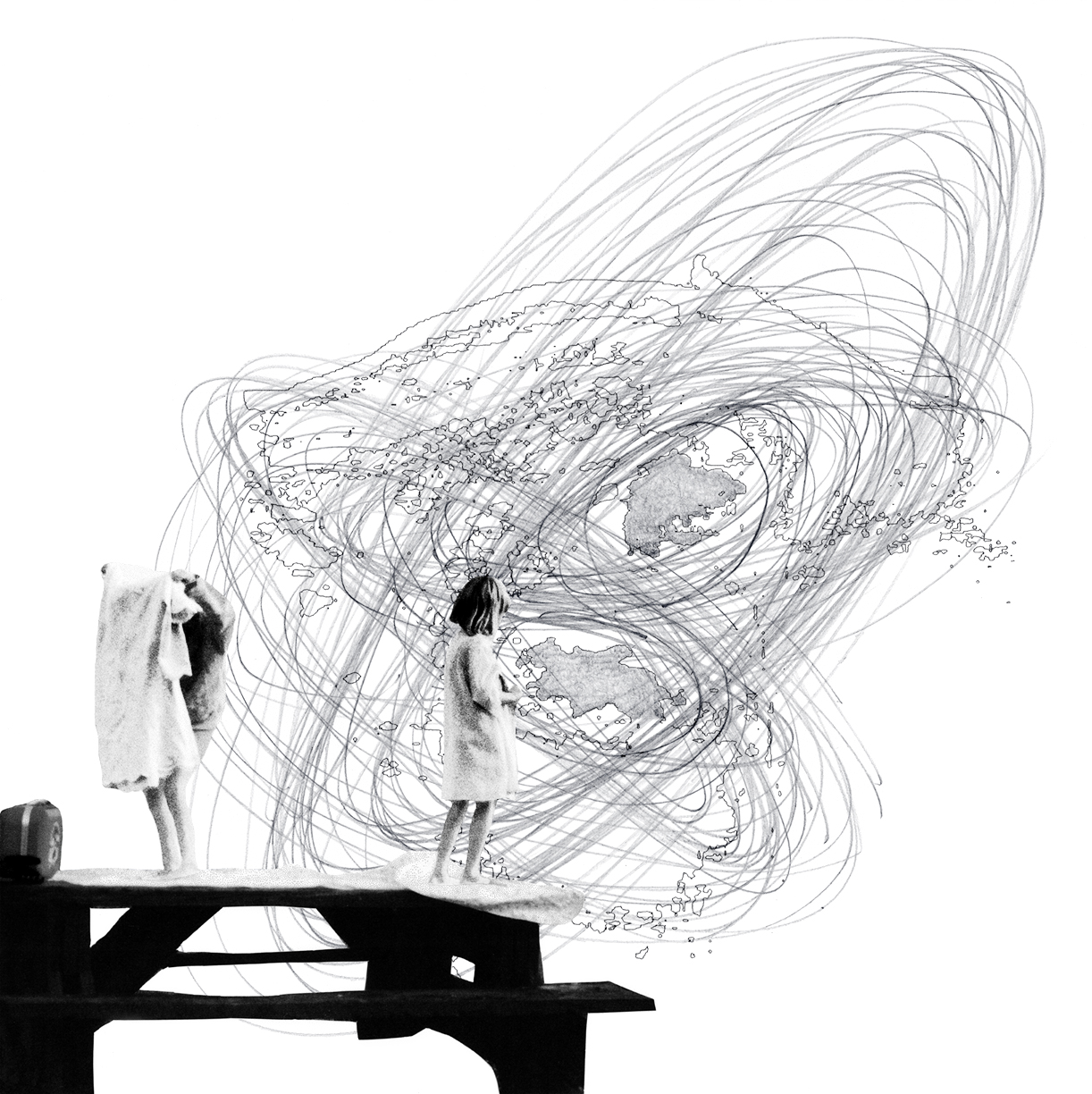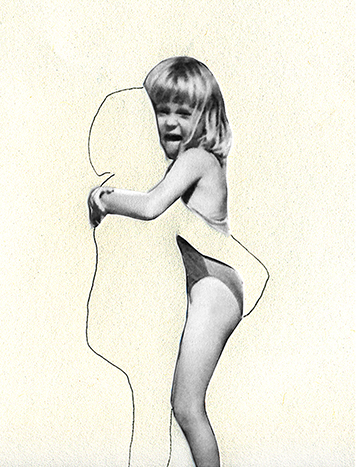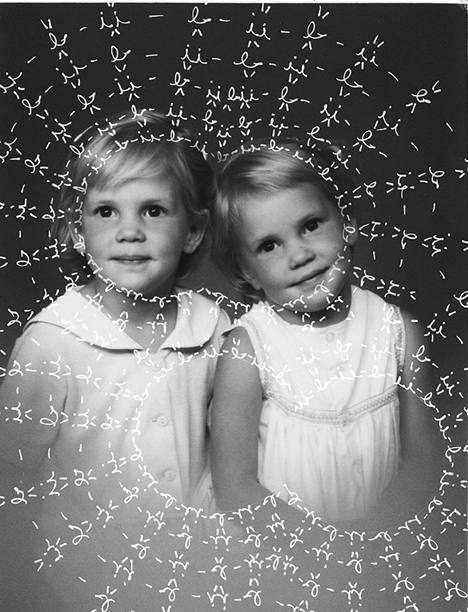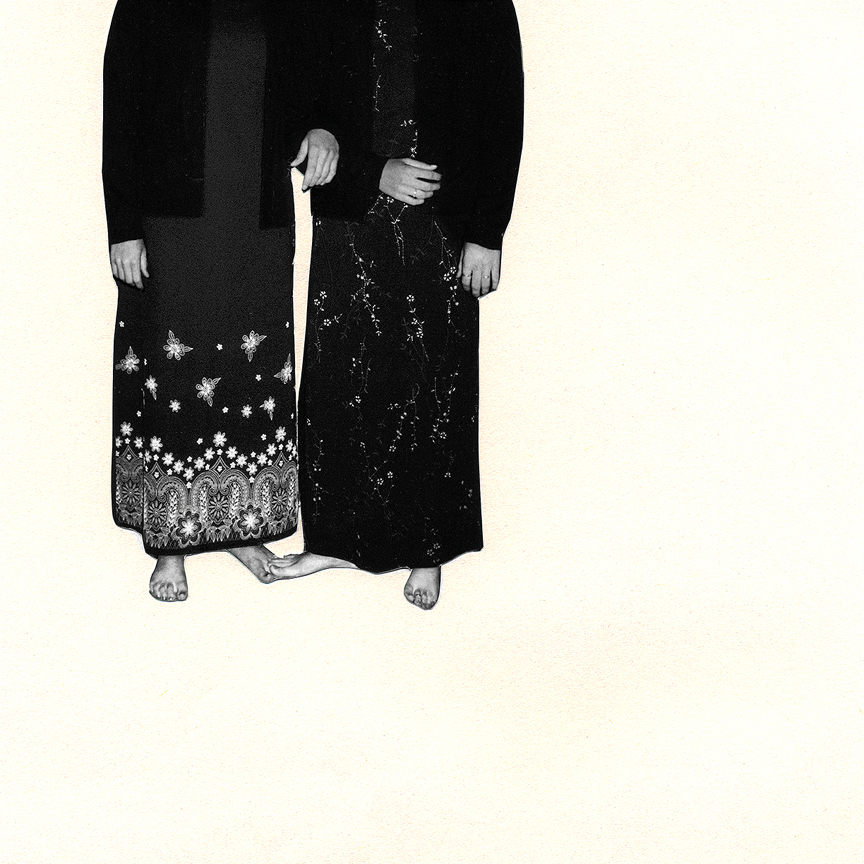Q&A: Michele Wysocki
By Hamidah Glasgow | May 25, 2016
Michele Wysocki was born in Denver, CO two minutes after her identical twin sister November 1, 1984. She received her BFA in Photography from The University of Colorado Denver in 2008 and her MFA in Photography from The San Francisco Art Institute in 2010. Michele is finishing the current round of research and image making for her ongoing body of work The Poetics of Twinship. She will have a solo show at The Center for Fine Art Photography in Fort Collins, Colorado in January 2017.
HG: Your being an “identical twin” and participating in medical twin studies from a very young age inspired your body of work. Initially it was the doctors asking the questions taking the measurements, and then it became your work to do so. How did that shift happen for you as an artist?
MW: That is a great question. In graduate school I was asked, “Why are you drawn to science?” It was a natural question to ask since most of the work I was making at the time contained elements of the scientific. You would think that my personal connection to science as a twin study subject was obvious to me, it wasn’t. It was buried beneath my individualized self, the self that only told her friends/professors/peers that she was an identical twin when her twin was in town- just to prevent confusion. It was freeing that I was not known as an identical twin, that my uniqueness did not hinge on my relationship to my sister. All of the pieces came together one afternoon when I rushed to a critique straight from the airport after having gone home to see my family. I was flustered and chatty while hanging up my work and happened to mention my twin sister, her diabetes and the studies we have participated in as identical twins. There it was. I grew up surrounded by medical equipment and extra doctors visits because my sister was diagnosed with juvenile diabetes when we were 5 years old. I watched her get a shot of insulin at least 3 times a day and check her blood sugars all day long. The doctors at her appointments were perplexed, why does one identical twin have diabetes and the other one does not? We participated in general studies, which made use of identical twins, and specific studies, which looked at our interesting case regarding juvenile diabetes. I realized my experience of being an identical twin informs everything I do, so I chose to explore it fully. It seemed appropriate to begin the project by embracing the scientific perspective of identical twins.
HG: In your statement about Twice Upon A Time, you talk about obsessive compulsion to prove the validity of your questions. What were those initial questions?
MW:
How does science define identical twins?
Why am I so shocked by the new scientific research surrounding identical twins genetic non-identicality over time? Are we still considered identical twins or should we be referred to as monozygotic twins?
When were Kristen and I the most identical genetically?
HG: What are you most pressing questions now?
MW:
Is it possible to accurately articulate twinship for singletons?
Why is the origin of identical twins still a mystery? Scientists do not quite understand yet why one fertilized egg spontaneously splits into two. Will I learn the answer in my lifetime?
Since my line of questioning creates a lot of space for many different disciplines to inform one another, what does this dance between the known and the unknown, the verbal and the visual, and the micro- and macro- cosmos mean to me?
HG: Tell me more about how chance and synchronicity inform your work?
MW: Chance enters my studio practice in a variety of ways. For instance, I make work intuitively for a few years then file it away to be understood at a later date. By intuitively I mean that I rarely go straight from a preconceived idea to a finished piece. Most of the time I am creating the visual and discovering the meaning as I go, the less amount of control over the finished piece the better. I put the work away for a while in an attempt to forget what I was reacting to at the time so that I can appreciate what actually happened. When I feel like I have made enough material I look at it all together. I always find mesmerizing connections that would not have come about any other way. Both of my research notebooks were produced this way.
I experiment a lot to discover the meaning within my work. A few more techniques I use to build in unexpected outcomes are: printing images on top of one another without previewing the result beforehand, inverting/making a negative of all of my images in Photoshop. Some pieces take on far more interesting metaphors in their inverted state. I also print on transparent vellum instead of photographic paper so I can easily overlay images on top of one another until I find the best fit or most fascinating relationships between the two or three or four. The majority of my studio practice revolves around my reactions to chanced events.
The “ah ha” moments are initiated by chance, but recognized through synchronicity. My mind plays the “that looks like a _____” game all the time. This game is not limited to visuals alone, I play with text in the same way. The title of this recent work/research notebook, United U n t i e d came about because I mistranscribed notes from the margins of a book. My mind saw united, but the actual quote said untied. When I wrote these two words, one on top of the other, the switching of the “i” and the “t” blew my mind. It mirrored mistakes made when making copies of the genetic code, and stood in for the ol’ switching places twin trick and the actual meaning of both words next to one another, wow. As a twin you are at once united and untied at the same time. This body of work would not exist without this game or method of finding meaningful coincidences.
HG: Is this work United U n t i e d about an attempt to describe twinship, or an exploration of the complexities of being a twin. In other words, is the work an effort to bring into a visual presence the understanding of being a twin?
MW: For me, it is both.
HG: I’d like to hear more about your research notebooks. They are works of art full of your thoughts and reactions, experiments and layered understanding and questioning of twinship.
MW: My research notebooks serve as documentation of my ponderings during each phase of my project. Since I explore so many different aspects of twinship from so many angles I need help remembering all of the discoveries along the way. I made my first research notebook for Twice Upon A Time in graduate school. I wanted to provide evidence of my obsessive research that went beyond the images people saw hanging on the wall. I did not want to show the piles of notes, photographs and texts as they were; they were too disorganized and overwhelming. While looking for ways to display significant amounts of information in a visual way, I remembered how much I enjoyed looking at maps and atlases. How could I make an atlas of sorts out of my research material? And how can I do that without the information becoming too dense? I was thinking in terms of visual density as well as conceptual density. The use of transparent vellum helped solve the visual density issue, and I am not too sure if I completely worked out the conceptual density aspect. My more recent research notebook, United U n t i e d, came together in a more refined way. I think it has a lot to do with the fact that it was edited in a chronological way, tracing Kristen and my life from birth through 2016. My first research notebook does not have an editing method in place other than my intuitive visual preferences. I have found that my research notebooks describe my work and the process by which I make it best.
HG: As you explore the oscillation between individuality and togetherness (the basics of being a twin) combined with the medical and scientific aspects of taking part in twin studies from an early age, does the science of DNA and the progression of research effect the way that you make visible your twinship? Do those factors effect your own relationship to being a twin?
MW: Most definitely. Twice Upon A Time exists because I was shocked by the current research about identical twins in 2008. A headline read, “Identical Twins are Not Identical.” Wait, what? I felt a sense of loss, like we're less twins now than we were before. Obsessive questioning within scientific research began. I learned as much as I could about epigenetics, the field concerned with the markers than turn genes on and off, the field that stated our lack of identicality. I interviewed my twin and she was much less reactive than I was about the new findings. Science was not her oracle, only mine.
United U n t i e d is a response to Twice Upon A Time. It is my attempt to define twinship based on my life experiences so far, which it not limited to my experience as a twin study subject. It is definitely more sentimental than Twice Upon A Time because I cherish Kristen and my connection more than I used to. It is fact now that my twin and I are less and less identical the older we get. My family archive exemplifies this fact and serves as a record of our decreasing likeness over time.
HG: Tell me about your process for making the work?
MW: I resisted making side by side portraits of Kristen and I for years. Actually, I have yet to make one! When I started Twice Upon A Time in graduate school all my classmates wanted to see were photographs of us together so they could compare our likeness. I was so annoyed because we were sized up like that our whole childhood, I was not going to do it to myself as well. I have just recently entertained the idea though; our bodies are so different now. I have had a baby, she is nearly covered in tattoos…I am interested in stretching the expectation of sameness now that it is easy to tell us apart. The most identical aspects now are internal-genetic. It’s amazing that I have gone 8 years without “that photo!” A driving force has been to represent my curiosity regarding twinship, not everyone else’s.
I say that, yet I invite Kristen to come and look at my work in progress a lot. Some of her comments directly effect the choices I make from that point onward. She is all about this project and offers to help in any way that she can.
I tend to work in phases: research, writing, and making images. There is no true order, I move from one to the other when I exhaust the previous mode.
Research: I just found out last week that we have been selected to participate in a new twin study at Yale. I guess Kristen and I have a rare genetic code for identical twins that will help unravel new theories on epigenetics. I am guessing that our rarity has to do with the fact that Kristen has Type 1 Diabetes and I do not even carry the genetic markers for the disease. We will get our blood drawn soon and I intend to interview as many people in the project as I can.
Research: I have been corresponding with a fellow twin, Dr. Will Harvey who is writing the first complete history of twins. His blog www.thewonderoftwins.wordpress.com has been a fantastic resource for United U n t i e d. It has been difficult to find discussions that go to the depth at which I am exploring twinship, thankfully Will’s work goes there and beyond.
Writing: I ponder research most of the time. When I am not making note of my reactions to research, I am writing about my images to understand them more fully.
Research+writing+making images: My research notebooks are the result of me wanting to ground my final images within my extensive research practice. On the surface my work seems to come from a very calculated place, when really it comes from almost the opposite. My time capsule like methodology generates a large variety of material. After I decide what will be included in the book, what pages need to be printed on transparent vellum verses those that do not; I shuffle the images around until they lock into place with one another. This is my favorite phase of this work. Once they are in place the book is spiral bound so that it will lie flat when viewed.
Making Images: A few final pieces are made by scanning pages straight from the research notebook. Yet another moment of chance and synchronicity. Other final pieces arrived after the research notebook was finished so they will not be included this time around. I forgot to mention that I do not always work photographically, in fact, I often make drawings from photographs or draw on top of photographs and use a flat bed scanner to document my work.
HG: When you see the work as manifested in the physical, is that visceral experience similar to the visceral experience you have as a twin?
MW: No, the work feels a few times removed. I think that the observers of twins might have a more visceral experience than Kristen and I do. We have been viewed and read our whole lives; to perform it ourselves in viewing the work is a bit redundant. Maybe if someone else photographed us we would have a more visceral experience. That is not a bad idea actually!
HG: What’s next for you?
MW:
- Make side-by-side portraits of Kristen and I. (Ha, finally!)
- Prepare for my solo show at The Center for Fine Art Photography!
- Look into ways to print/publish both of my research notebooks. (Right now I have two copies of Twice Upon A Time and only one copy of United U n t i e d, all of which I printed myself!)
- Print and send a copy of my United U n t i e d research notebook to Will Viney in hopes that it will aid him in his History of Twins efforts. (I hope to meet and work with him in some capacity soon too.)
- Submit The Poetics of Twinship to anyone who might be interested
- Long term dream…open a Twin Museum with the help of fellow twins, twin researchers/academics etc.
All images © Michele Wysocki
